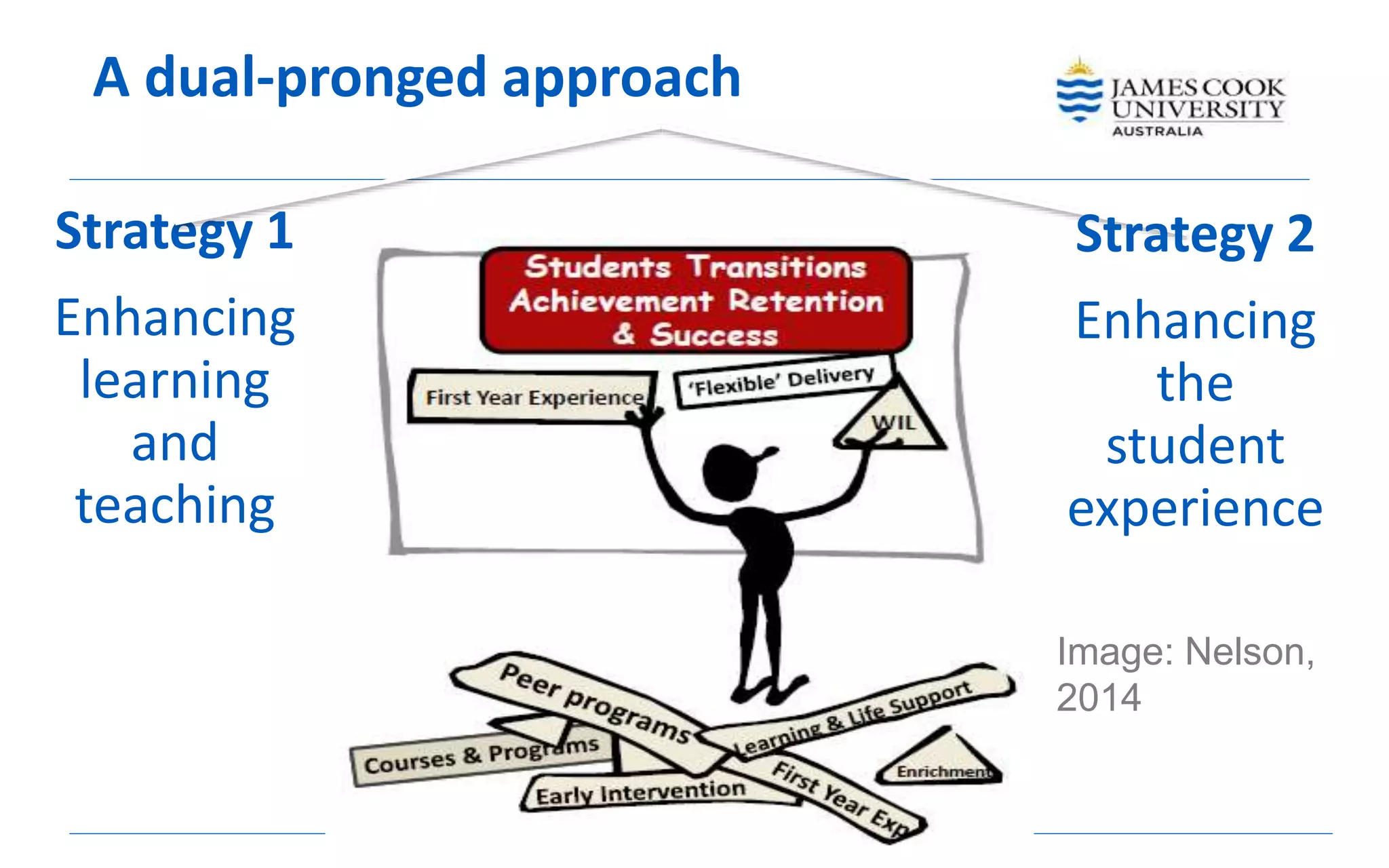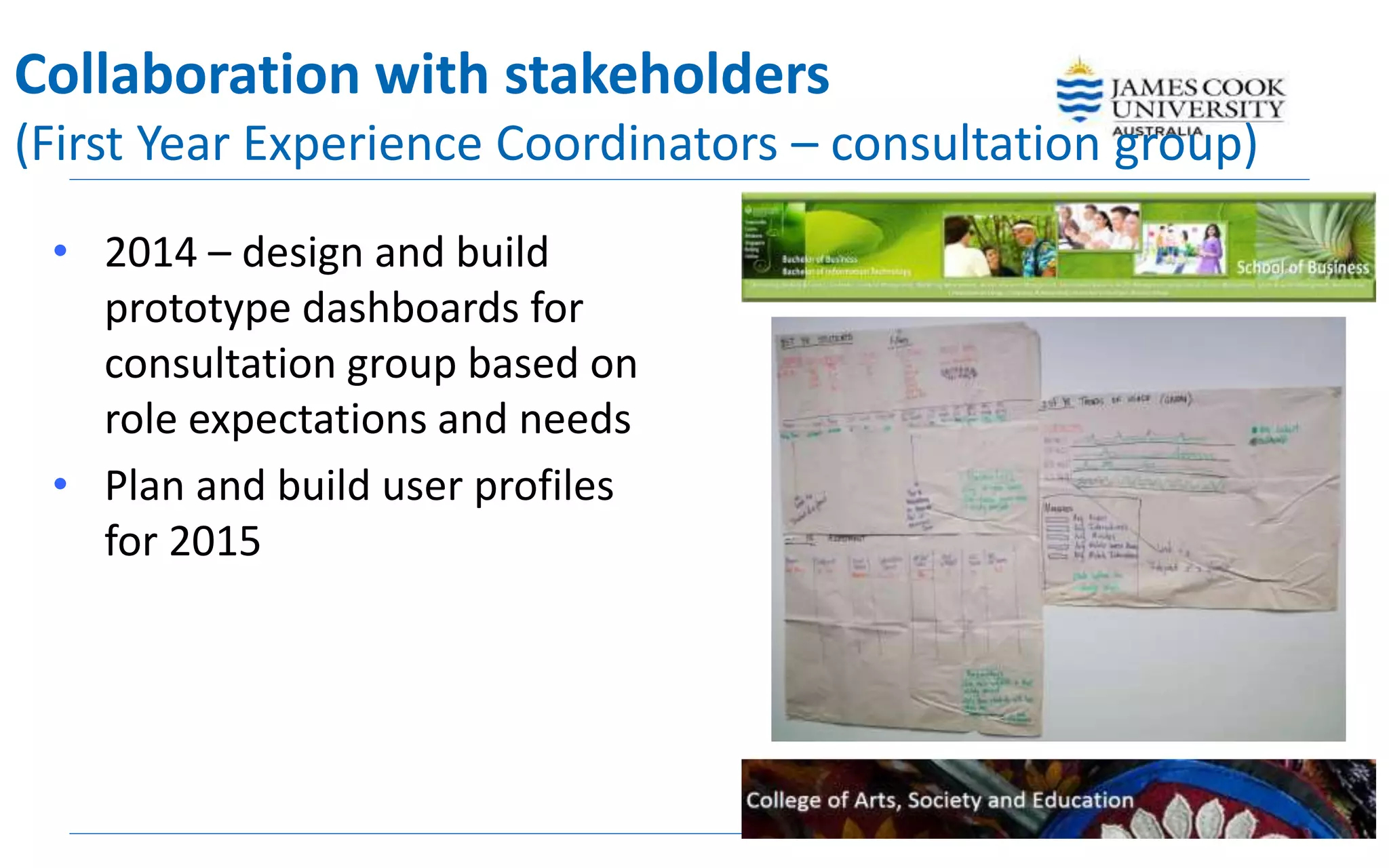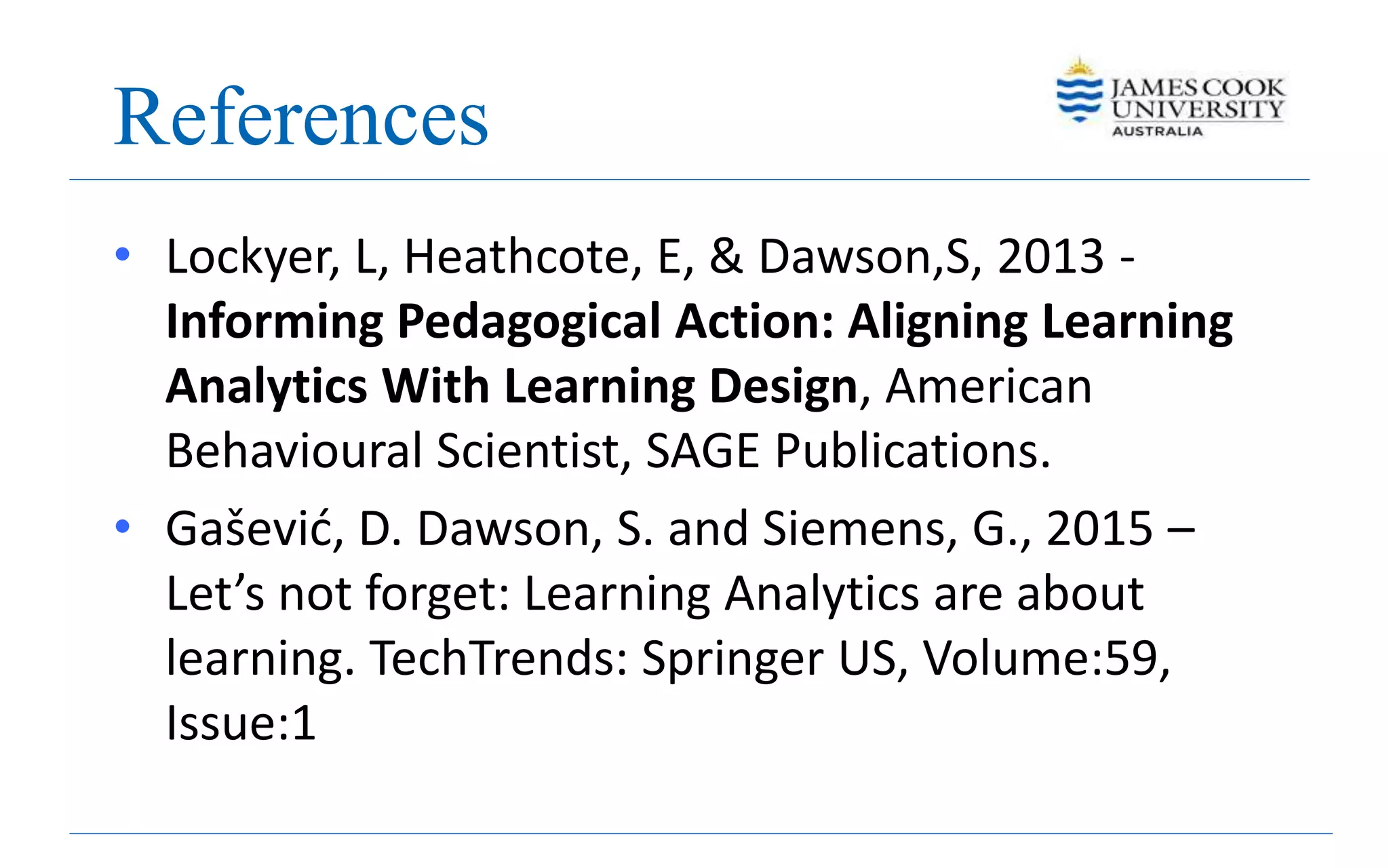1) James Cook University implemented Blackboard Analytics for Learn to take a dual-pronged, data-driven approach to enhancing learning/teaching and the student experience.
2) Initial rollouts involved customizing dashboards and reports to provide insights for support officers, coordinators, and academics.
3) The analytics aim to inform subject redesign, evaluation, planning and monitoring to improve student engagement, retention and blended learning design.







































